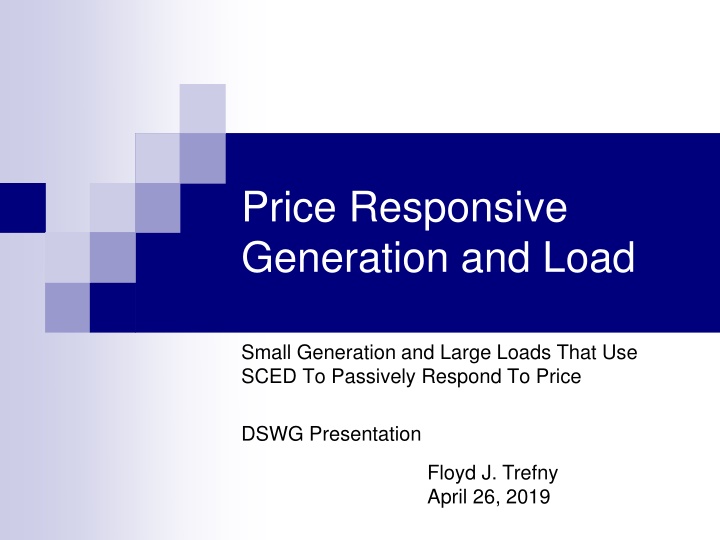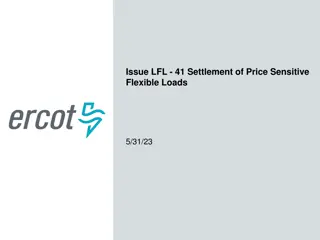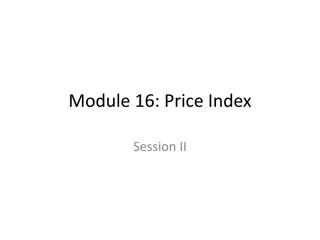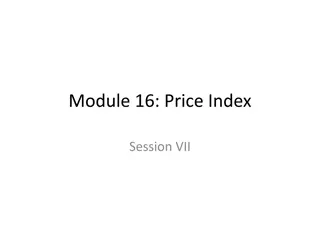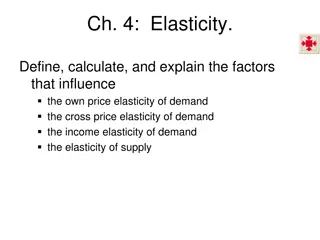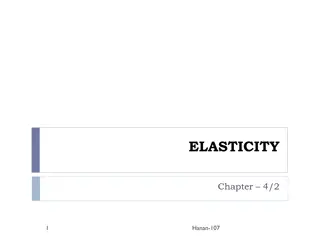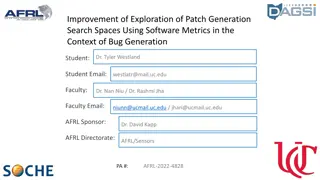Enhancing Price Responsive Generation
Price Responsive Generation and Load explores how small and large loads can passively respond to price signals, highlighting the disconnect between retail load payments and SCED prices. The presentation delves into load settlement principles, interruption scenarios, and proposes fixes to ensure accurate pricing for both generation and loads.
Download Presentation

Please find below an Image/Link to download the presentation.
The content on the website is provided AS IS for your information and personal use only. It may not be sold, licensed, or shared on other websites without obtaining consent from the author.If you encounter any issues during the download, it is possible that the publisher has removed the file from their server.
You are allowed to download the files provided on this website for personal or commercial use, subject to the condition that they are used lawfully. All files are the property of their respective owners.
The content on the website is provided AS IS for your information and personal use only. It may not be sold, licensed, or shared on other websites without obtaining consent from the author.
E N D
Presentation Transcript
Price Responsive Generation and Load Small Generation and Large Loads That Use SCED To Passively Respond To Price DSWG Presentation Floyd J. Trefny April 26, 2019
Background Interval Data Recorders (IDR) meters measure retail load on 15-minute intervals Load Zone Settlement Point Prices from ERCOT that retail consumers pay are based on 15-minute intervals. Calculated for each bus s load weighted average of 5-minute bus LMPs from each SCED executed during the 15-minute period These 5-minute averages are further weighted by the change in system load over the 15 minute period Retail Loads pay metered kWh multiplied by the 15- minute settlement point price There is a disconnect between what retail load pays and the 5- minute SCED prices that load may respond to Loads may not receive the proper price benefit of their demand response actions
Loads and Interruption Scenarios SCED Intervals Price* Cost Scenario load 5 10 15 15- Minute kWh Low price ($45) Low price ($45) Low price ($45) Base 12,667 12,667 12,667 38,000 $45 $1,710 High price ($3,000) High price ($3,000) High price ($3,000) No Interruption 12,667 12,667 12,667 38,000 $3,000 $114,000 Low price ($45) High price ($3,000) High price ($3,000) Interrupt second interval 12,667 0 0 12,667 $2,015 $ 25,523 Low price ($45) Low price ($45) High price ($3,000) Interrupt third interval Consumer should only be paying $1,140 12,667 12,667 0 25,333 $1,030 $ 26,093 *- 15-minute price assumes there is no effect from price weighting based on total load changes
Fixes Generators do not have the same problem as loads Protocol section 6.6.3.1, Real-Time Energy Imbalance Payment or Charge at a Resource Node, addressed a similar problem with generation settlements ERCOT uses Generation telemetry to adjust 15-minute energy data into 5 minute data for settlement purposes Structure of Load settlement equations make it difficult to easily change calculations for individual loads Loads are summed up individually for each QSE by LZ and then pricing is applied to result in a charge to a QSE Apply a new concept of Price Responsive Generation and Loads where ERCOT also gains insight into actions of passively responding loads and small generation
Price Responsive Generation and Loads Protocol definitions would be updated to include Price Responsive Generation and Loads Price Responsive Generation and Load (PRGL) is either a generator or load likely to passively respond to SCED prices that are published every 5 minutes Passive Response is an action by a Market Participant without an instruction from ERCOT Generation not participating in ERCOT markets and is less than 10 MWs would be eligible provided the generation meets the power telemetry requirements Any size Load not providing Ancillary Services may participate provided the telemetry requirements are met NOIEs who have demand response in their area may also apply as a PRGL PRGLs must register with ERCOT to be eligible for 5 minute settlement adjustments PRGLs would provide power (kW) telemetry (scanned every 2 seconds) from the same metering equipment used to measure energy (kWh) generation or consumption To assure unbiased data, telemetry from PRGLs would typically be transmitted directly from the kW metering system to ERCOT via the TSP Through their QSEs, PRGLs would be paid or charged for energy based on 5 minute prices from SCED and estimated kWh for the same period
Energy Settlement of PRGLs No changes to the current 15 minute settlement calculation for QSE s load for PRGLs Unregistered small generation settlements would not change This generation is currently paid the 15 minute load zone price for energy ERCOT would integrate the PRGL s telemetry signal for power to produce 5 minute energy production or usage The 5 minute energy estimation from the integration would be prorated to add up to the same total energy measured in the 15 minute interval Each 5 minute energy would be multiplied by the load zone LMP from SCED for that interval and totaled for the 15 minute interval The difference between the current 15 minute settlement and the corrected 5 minute settlement total would create a credit or charge and is added to the QSE s settlement Credit or charge would be applied to the ERCOT Balancing account (RENA) Actually makes RENA more accurate
ERCOT Operations Use of PRGLs The totals of PRGL for generation response and load response would be determined separately ERCOT operators would be able to monitor the total amount of PRGL generation and PGRL load on the system at all times ERCOT would build new models for PRGLs based on the heuristics of price response observed over long periods of time Heuristics - to learn, discover, understand, or solve problems on its own, as by experimenting, evaluating possible answers or solutions, or by trial and error The generation model could be used to determine when small generation responds The load model could be used to predict demand response to SCED prices ERCOT would gain insight into the passive price responsiveness of generation and loads on the system to help determine effect on system demand during shortage conditions
If a few price-responsive loads and small generators respond better to real time market prices, then perhaps lower system prices overall will be the benefit to all consumers Next Steps ERCOT Steel Mills would possibly be willing to draft a NPRR to implement PRGL concepts into the protocols ERCOT would need to help draft the settlement equations for the NPRR We would like a general consensus from DSWG and ERCOT before proceeding
